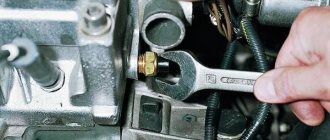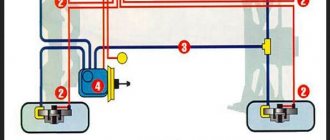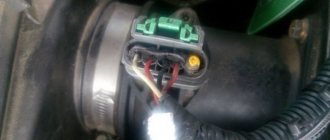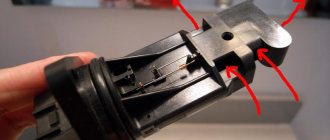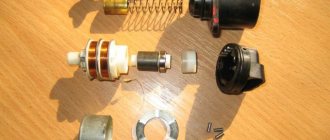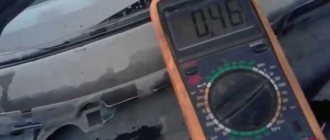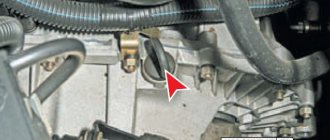High fuel consumption of the VAZ 2114 today is one of the most common problems faced by owners of domestic cars. The fuel consumption rate of the machine can be found in the technical documentation.
For the injection “fourteenth” engine, the consumption rate is within 8.5 liters per 100 km in the urban cycle and about 6.5-7 liters on the highway. But more often, VAZ 2114 owners record completely different indicators that go far beyond its limits. What is the most common problem and are there effective ways to fix it? Sometimes we are faced with the acute question of how to reduce fuel consumption on a VAZ 2114 8-valve injector?
What is the real gasoline consumption of VA3 2114?
Today it is a real rarity when a car fully complies with the specifications of the technical documentation. Most often, the manufacturer indicates data obtained during testing of the car under ideal conditions. The actual fuel consumption of almost all modern cars is 1-2 liters higher than the norm. You should not neglect important factors that contribute to increasing the “appetite” of the machine.
These factors are:
- Vehicle operating conditions.
- Driving manner and style.
- The presence of various types of malfunctions.
- Fuel quality.
High fuel consumption VAZ 2114 injector 8 valves, how much is this in numbers? Most owners of the 8-valve “fourteenth” note consumption in the range of 8.5 – 9 liters in the urban cycle and 7-7.5 liters per 100 km on the highway. This is an average figure that is close to the fuel consumption rate specified by the manufacturer.
Where is the mass air flow sensor located?
The mass air flow sensor on the VAZ 2114 is located in the air duct located behind the air purification filter. A wiring harness is connected to the sensor, ending with a plug.
Sensor design features
The VAZ 2114 can use mass air flow sensors of domestic and imported origin. The design of the devices is the same and corresponds to the diagram below.
The DMRV includes:
- 1 — block for connecting the wiring harness;
- 2 — sensor operation controller;
- 3 - measuring element;
- 4 — outer body;
- 5 — metal protective mesh;
- 6 — guide deflector;
- 7 — fastening the sensor body to the body;
- 8 — direction of air flow.
What is the optimal air flow for VAZ 2114 cars?
The amount of air required to form the mixture depends on the speed:
- at idle speed (850-950 rpm) - 9.5-10.5 kg of air per hour;
- at medium speed (2000 rpm) - 19-21 kg of air per hour.
Reducing the air supply leads to a leaner mixture, and increasing it leads to a richer mixture.
Small deviations in measurement accuracy have little effect on the operation of the engine, but with errors of 2-3 kg, the engine begins to operate unstably.
Some control units compensate for measurement inaccuracies based on data from other sensors. For example, the January 5.1 block additionally adjusts the mixture composition based on the signal from the lambda probe.
The main causes of failure of the mass air flow sensor
The most common causes of sensor failure are:
- dust ingress;
- oil contamination;
- short circuit of the wiring due to damage to the insulation or plug;
- mechanical damage to active elements.
A common cause of incorrect operation of the mass air flow sensor is the failure of electronic components, which increases the sensor’s response time to changes in air flow.
A working sensor monitors changes at a speed of 0.5 ms, and if it breaks down, the response time increases by 20-30 times. The defect is detected only by recording the operation graph with an oscilloscope.
Such a sensor cannot be repaired; it must be replaced with a new one.
What factors disable the mass air flow sensor?
Factors causing failure of the air flow sensor:
- Dust may be caused by improper installation of the sensor on the filter, which causes the sealing ring to become distorted. With this defect, a thin coating of contamination will be present on the sensor input grid. Another cause of dust is a clogged air filter, so regular maintenance will prolong the life of the air flow sensor.
- Oil is thrown onto the sensor if the level in the crankcase is high or if the oil separator in the ventilation system is clogged. An additional negative factor is engine wear, which causes lubricant to actively enter the crankcase ventilation.
- Contact with sharp objects on the insulation, oiling. Such impacts are the result of careless repairs.
- Damage to the sensor is possible during vehicle maintenance (impacts to the body) or during improper cleaning of the active part.
Characteristic signs of failure of the mass air flow sensor
Symptoms of DMRV malfunctions:
- Unstable engine operation at idle;
- reduction in acceleration dynamics;
- spontaneous change in speed in all operating modes;
- difficulty starting;
- Check Engine light turns on.
If an additional trip computer is installed on a VAZ 2114 car, then during diagnostics, in addition to direct sensor errors, codes indicating misfires and lean mixture conditions are possible.
How to check the mass air flow sensor yourself?
To independently check the sensor, there are several methods based on disconnection, as well as inspection and testing with a multimeter. There are no other diagnostic methods at home.
A thorough inspection of the mass air flow sensor is carried out on a special stand, which makes it possible to record sensor problems under various operating modes.
Another common testing method is to install an identical device removed from another vehicle.
Disabling the mass air flow sensor
The easiest way to check the mass air flow sensor on a VAZ 2114 is to disconnect the plug. If there is no signal, the engine control unit goes into emergency operation mode, determining the approximate air volume based on the throttle position.
At the same time, fuel consumption increases slightly - for the VAZ 2114 it reaches 10-12 liters per 100 km. A characteristic feature is the increase in idle speed to 1500 rpm. But when using the controller January 7.2. or Bosch M7.9.
7, the idle speed does not increase due to software features.
Visual inspection
External inspection requires removal of the air duct from the sensor. During the inspection, the dustiness of the inside of the housing and the corrugated air supply hose is assessed. There should be no traces of oil or dust on the surface.
Checking the device with a multimeter
- The purpose of diagnostics is to measure the voltage supplied by the sensor.
- Bosch products are checked in a similar way:
- 0280218004;
- 0280218037;
- 0280218116.
To measure you will need:
- test device:
- a set of measuring probes;
- WD-40 liquid.
The measurement is made between the yellow and green wires. Voltage values can be displayed on the screen of some on-board computers (menu voltage from sensors, U Mass air flow sensor).
Checking the mass air flow sensor using a multimeter is demonstrated in the video from “IZO))) LENTA”.
Determining the pinout of the mass air flow sensor
The location of the wires in the block starting from those closest to the windshield:
- yellow - positive input signal (in diagram 7);
- gray-white insulator - positive power signal (in diagram 12);
- green — sensor grounding (in diagram 30);
- pink-black insulator - sending a signal to the main relay.
Other colors of wiring insulation are possible, but the pinout sequence remains unchanged.
Instructions for testing
Measurement sequence:
- Insert the probes into the connector to the places where the wires are installed. To facilitate the procedure, the probes are lubricated with WD-40 liquid. The positive signal comes from the yellow wire, the negative signal from the green wire. It is not recommended to pierce the insulation and use additional cables, as this reduces the accuracy of the measurement.
- Switch the multimeter to DC voltage measurement mode with a limit value of 2.0 volts.
- Turn on the ignition, do not start the engine.
- Measure the voltage and compare it with the required value.
Comparison of test results with established standards
In accordance with the table, the sensor state is determined based on the measurement results.
| Voltage, V | Sensor status |
| 0,996-1,01 | New sensor |
| 1,01-1,02 | Working condition |
| 1,02-1,03 | Beginning of sensor wear |
| 1,03-1,04 | It is advisable to replace |
| More than 1.04 | Sensor is faulty |
How to restore the mass air flow sensor?
The optimal solution for problems with the mass air flow sensor is to replace the faulty sensor with a new one. But since the cost of the device is about 2500-3900 rubles, many owners are trying to “revive” the old part.
There are four recovery methods:
- installation of additional resistance;
- blocking part of the air supply channel to the thermistor with aluminum tape;
- updating the engine control unit firmware;
- washing the sensor body and housing from dirt.
Installing additional resistance
Additional resistances are installed in the circuit connecting the sensor to the control unit. When an electric current passes, the voltage decreases, which can be brought to the required limits. The resistance value is selected experimentally. Most often, a 1 kOhm resistor is soldered to the yellow wire and a 15 kOhm element to the green wire.
The main signs and reasons for the increase in fuel consumption of the VAZ 2114
If it’s summer and you drive on normal roads, but at the same time you notice an abnormal “appetite” of the fuel-injected 8-valve VAZ 2114, then it’s time to conduct a full diagnosis of the car’s condition. Excessive fuel consumption is easy to notice not only by the frequency of visits to gas stations. Often, owners note some oddities in the operation of the engine. Unstable operation of the “heart” of the car is accompanied by black smoke from the exhaust pipe and the presence of popping noises in the muffler or intake manifold.
Black smoke from the exhaust pipe most often occurs due to the formation of an overly rich fuel mixture. This disease occurs due to clogged injectors, faults in the ECU, and low-quality spark plugs.
Gasoline consumption can increase, both for a simple and harmless reason, and in the event of serious malfunctions in the car system. For example, a clogged fuel filter increases the fuel consumption of the “fourteenth” by as much as 2-3 liters. Low tire pressure and non-standard wheel radius also contribute. It has long been a known fact that the larger the radius of the wheel, the more effort must be made to turn it.
Other reasons for excessive fuel consumption include:
- malfunction of the oxygen supply sensor;
- low level compression;
- problems with the air flow sensor;
- late ignition, clogged catalyst.
How to check the mass air flow sensor with a multimeter and more
The engine of any car operates in a variety of modes. Each of them requires an individual ratio of gasoline and air. It is to create this mixture that the mass air flow sensor is designed. Today you will learn how to check, but first, we will analyze its principle of operation and design in order to clearly understand what you have to do.
The sensor itself is mounted in the space between the air filter and its pipe. It consists of a wire stretched along the entire perimeter of the air channel, both ends of which are connected to the vehicle’s on-board network. The meaning of its operation is that a certain voltage is applied to it and the flowing current heats the wire.
The air flow passing through the pipe cools the wire and its resistance changes, and the output voltage changes accordingly. Moreover, this value depends on the amount of incoming air. Thus, the sensor sends a signal to the ECU and it performs all the necessary calculations to maintain the stoichiometric ratio of gasoline and air.
Diagnostics of DMRV faults
Having understood the principle of operation, it’s time to find out how to check the operation of the sensor. Prerequisites for malfunctions of the mass air flow sensor include the following symptoms:
- The first and most important sign is the engine switching to emergency mode . The “Check Engine” indicator lights up on the instrument panel. This happens because the sensor stops sending the information needed by the controller to supply the required mixture, so it switches the injector to “carburetor” mode when the mixture is supplied in a strictly specified quantity.
- Unstable engine operation when using the XX mode.
- High or too low revolutions of the same idle speed. One of the resulting emergency engine operation.
- Difficulty starting the engine. In some cases, the engine does not start at all.
- Bad dynamics . Many drivers call this behavior of the car “stupid” acceleration.
- High fuel consumption also comes from the emergency mode of the engine.
Now that you have dealt with the signs of a malfunction, it’s time to open the hood and start checking the sensor. There are enough ways to find out about its condition and anyone, even a novice driver, can handle it.
1. Disable the sensor. As you may have guessed, the sensor no longer sends information about the amount of air and the computer will 100% switch the engine to emergency mode. Try starting the engine and driving the car.
If the dynamics have improved, and the idle speed is around 1500 rpm. This means the sensor is faulty. This method is suitable for those whose motor, with the sensor turned on, went into emergency operation mode, and therefore is not widely used.
More typical for older fuel-injected cars.
2. Controller firmware. If you have recently been flashing your ECU, it is likely that the software did not install correctly.
In this case, you can put a plate no more than 1 mm thick under the damper. Start the engine, the speed should be within 1500 rpm.
After this, try to disable the sensor chip and if the motor does not change its operation, then the reason is 100% in the firmware.
3. Professional way. Involves the use of a multimeter and gives accurate measurement results. You can measure both the resistance and the voltage on the sensor wire, but a more accurate measurement is obtained in the second case.
To do this, set the voltmeter switch to the 12 Volt DC position and attach the probes to the ends of the sensor. In this case, you can get the following results:
— 1.01-1.02 - this means that the sensor is working and does not need to be replaced. The reason for this engine behavior must be sought elsewhere.
Ways to reduce fuel consumption of a VAZ 2114 with an injector
What to do if the VAZ 2114 has high fuel consumption and the reasons are unknown? Of course, it is best to go to a service station and undergo a full computer diagnostic. The fact is that the VAZ 2114 injection system with 8 valves contains a large number of different sensors. A failure in the operation of one of them can lead to the fact that the owner of the car will rack his brains for a long time in search of faults, but will never find them without special software.
One of the most effective ways to reduce gasoline consumption by a car and its subsequent control is timely prevention of vehicle components and components and scheduled maintenance.
Not every faulty sensor affects the “appetite” of the car. The lambda probe plays the greatest role in the excessive consumption of the fuel-air mixture. This device regulates the formation of a combustible mixture based on the volume of oxygen in the exhaust. The presence of errors in the operation of the lambda probe can be determined by the on-board computer. This device most often fails due to poor fuel quality and an incorrectly set advance angle.
The car owner can independently eliminate or partially reduce the high fuel consumption of a VAZ 2114 injector with an 8-valve engine through the following measures:
- Regularly replace the air and fuel filter. In this case, preference should be given to factory elements.
- Monitor the condition of the spark plugs and replace them according to the recommendations.
- Periodically measure the tire pressure level and monitor the condition of the brake system parts.
- Refuel your car only at time-tested gas stations.
- Maintain cleanliness of components and assemblies of the engine compartment.
How much does a new sensor cost?
Of course, car parts are not cheap, but if necessary, they must be purchased in order for the vehicle to work properly. The sensor should be purchased only in specialized stores where there is a guarantee, and where you can actually get competent advice. This spare part costs around 350 rubles. As a rule, such options are very reliable and durable. It makes no sense to buy cheaper ones, since their characteristics are in no way inferior to those that cost 350. It’s not worth buying cheaper ones, because these are mostly Chinese parts that are short-lived and of poor quality. If you find it difficult to choose, then ask the seller which sensor is better to choose. Basically they are all similar, the only difference is the price. Please note that this part can also be purchased online. The main thing is not to be cheap, but also not to spend all your money on one spare part.
As we can see, any part of the machine becomes unusable over time, so it needs to be replaced. As for the idle speed sensor, this device also needs to be replaced from time to time for the accuracy of the indicators. Quite often, due to a faulty sensor, a car begins to have problems with the engine, the speed deteriorates, etc. With such problems, it is quite dangerous to drive a car, since there is no guarantee that the engine will work without “whims,” and on the road this is very dangerous . You shouldn’t risk your most valuable assets; it’s better to send the car in for repairs or fix it yourself. A car, like any other device, must be used carefully and repaired as needed, then it will serve for a long time and reliably.
Useful video
You can learn more about the possibilities of reducing fuel consumption by watching the video below:
Maintaining the proper condition of the car in the future will save the owner from hassle and unexpected expenses. You just need to promptly replace clogged filters and damaged spark plugs, and then increased fuel consumption will bypass your car.
- I was told 4 times
- I said 19 times
Login required to view!
To view you need to log in. If you are not registered yet, follow the link: Registration.
Hello. There is a VAZ 2114 mileage 180,000 km ECU M73 stock ident I317DA02. Disabled DC firmware E-2. Gasoline 95. The essence of the problem. Increased air consumption at idle is about 15 kg, the ignition timing fluctuates from 1.5 to 12 and the engine load is 27-30%, resulting in uneven engine operation. This is observed on all firmwares. First of all, I decided to check the mass air flow sensor due to the increased air flow, I checked the readings 0.99-1.00 with a multimeter (the mass air flow sensor is normal). Then I replaced the knock sensor with a completely new one in order to correct the ignition angle, but this did not help either. Replaced the IAC, still the same. I adjusted the valves, but it didn't help. I've already tried everything, looked for air leaks, checked the throttle valve. All the same. Tell me where to look for the reason. I am attaching the captured log.
Cleaning the air flow sensor
As noted earlier, the mass air flow sensor cannot be repaired.
But some craftsmen manage to clean it, thus extending the service life of the monitoring device in question. Moreover, some claim that they have done this more than once. In reality, it is worth recognizing that the chance of repair is quite low. However, if you take into account that the cost of a new sensor is quite high, and an attempt to revive the old one generally requires nothing but time, then you should try.
What should be the air flow for the VAZ-2114
During normal operation of the sensor, the engine of this machine consumes from 10±0.5 kg of air per hour of operation. If the quantity is miniaturized, then the car’s dynamics are miniaturized, which saves fuel, but when it increases, fuel, on the contrary, is greatly consumed. In cold weather, this can lead to problems with starting the engine. If the sensor characteristics deviate from the real ones, then the engine begins to work intermittently, or even does not start at all. What can cause a sensor to deviate? Let's try to find out.
Basic faults
Symptoms of oxygen sensor failure are:
- the appearance of “Check Engine” on the instrument panel, indicating an error;
- increased gasoline consumption;
- loss of power and dynamics, jerks and “failures” with a sharp increase in the number of revolutions;
- Difficulty starting a hot engine.
- Malfunctions in the operation of the mass air flow sensor may occur due to:
- lack of contact in the connector;
- contamination of the air filter, grille and sensor temperature detectors;
- mechanical damage to working elements.
Causes of sensor failure: when replacement is required
The error of the sensor significantly aggravates the functioning of the car as a whole, but mainly it affects the operation of the controller. When using a sensitive controller, this can lead to floating idle speed, but with all this there will be no noticeable dips during acceleration. In general, the readings should be normal, so it is necessary to monitor this and, in case of malfunction, replace the device.
The crankcase ventilation system can cause inaccurate readings. If the throttle is closed, the gases are diverted through the line into a free space. A certain amount of these gases goes into the idle line, where it comes into contact with the mass air flow sensor. Then the resin settles on the resistor, which leads to errors in the sensor readings.
Mass air flow at idle on Prior 1.6 V16
mass air flow
at idle speed on Prior 1.6 V16 oxygen sensor voltage 1 period of sensor signal...
Mass air flow sensor (MAF)
Road transport is constantly being improved. All modifications made to the design of the car are aimed at improving various indicators - increasing power, reducing fuel consumption, improving aerodynamic performance and the level of overall comfort.
This is what the new mass air flow sensor looks like
One of the main improvements related to reducing fuel consumption was the transition from the use of a carburetor power supply system in favor of an injection system.
The use of a system in which the fuel supply is strictly metered for the operation of the power plant in different modes makes it possible to reduce consumption while ensuring the maximum possible output of power from the power unit.
But in a carburetor system, the system is technologically simpler, since the operation of the main element of this system, the carburetor, is performed mechanically, which ensures high reliability. Also in this power system, the air-fuel mixture is formed in the carburetor and enters the cylinders due to the vacuum created by the pistons.
The injection system is technically more complex. The working mixture is already formed in the cylinders, and the components of the mixture are supplied to them separately. Air, one of the elements of the mixture, is supplied due to vacuum, but fuel is forced into the cylinders by injectors.
The electronic control unit is responsible for the required amount of fuel required to be supplied to the cylinders.
But in order to correctly dosage, the control unit must know such parameters as the position of the crankshaft and its rotation speed, the amount of air entering the cylinders, the amount of air remaining in the exhaust gases, and the position of the throttle valve. These parameters for calculating the amount of fuel supplied are met by sensors installed in certain elements of the power plant.
Mass air flow sensor. Types
Let's consider a sensor responsible for providing information about the amount of incoming air - a mass air flow sensor (MAF, air flow meter).
Schematic design of an air flow meter
The mass air flow sensor is always located in the air pipe, next to the air filter, its task is to determine the air flow at the outlet of the filter. There are several types of mass air flow sensors.
- The first air flow meters were based on a pitot tube; their second name was blade flow meters. The main element of such a sensor was a thin plate, softly fixed. The air flow, in the path of which the sensor is located, begins to bend the plate. The potentiometer included in the circuit measures the degree of bending of the plate, while the resistance of the potentiometer changes - it is the change in the resistance of the potentiometer that acts as a signal for the amount of air supplied to the control unit.
- More modern and most common are sensors using plate hot-wire meters. In such a flow meter, the main element is a heat exchanger with two thin platinum plates. Energy is supplied to these plates to heat them, one of them is the working plate, the second plate is the control one. The operation of the mass air flow sensor is based on maintaining the same temperature on both plates. It works like this: the air flow, passing through the heat exchanger, begins to cool the working plate. In order to maintain a temperature on the working plate identical to the control temperature, a larger amount of current begins to be supplied to it. The change in the amount of current acts as an indicator for the control unit about the amount of air entering the system.
- The third type of mass air flow sensors are flow meters, which use film meters. They use platinum-coated silicon wafers as working elements. MAF data appeared relatively recently, so they are not yet widely used.
Video: Cleaning the mass air flow sensor How to properly remove and clean the mass air flow sensor Everything in detail
The performance of the mass air flow sensor plays a significant role in the correct formation of the air-fuel mixture. Therefore, its malfunctions lead to disruption of the installation or, in some cases, the inability to start the motor.
The failure and failure of this sensor can be identified by the following signs:
- the “Check engine” signal comes on;
- increase in gasoline consumption;
- power drop;
- decreased dynamics of speed gain;
- difficulty starting or inability to start;
- floating speed in idle mode.
Functions of mass air flow sensor
What is the VAZ 2114 mass air flow sensor and what functions does it perform? The primary task of the regulator is to create arrogance from air and fuel vapors.
The regulator can measure two interconnected parameters, namely:
- reaction time;
- volume of air used.
In accordance with the information received, the correction device determines the required volume of components to create the mixture. If incorrect data is provided, the mixture will not be able to correspond to the operating mode of the power unit; accordingly, its power may decrease and fuel consumption may increase.


